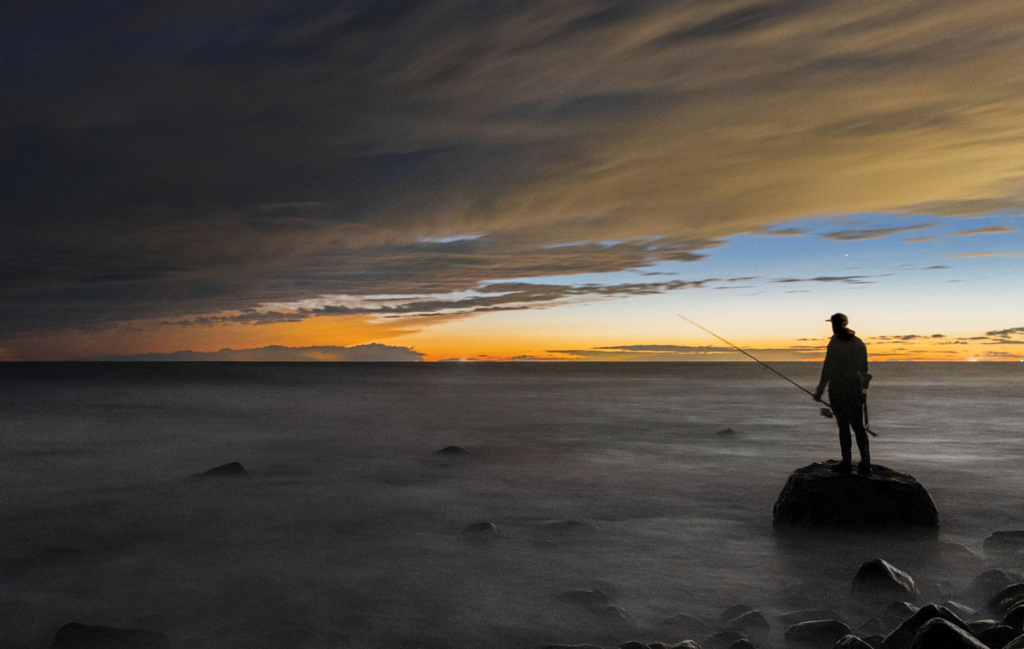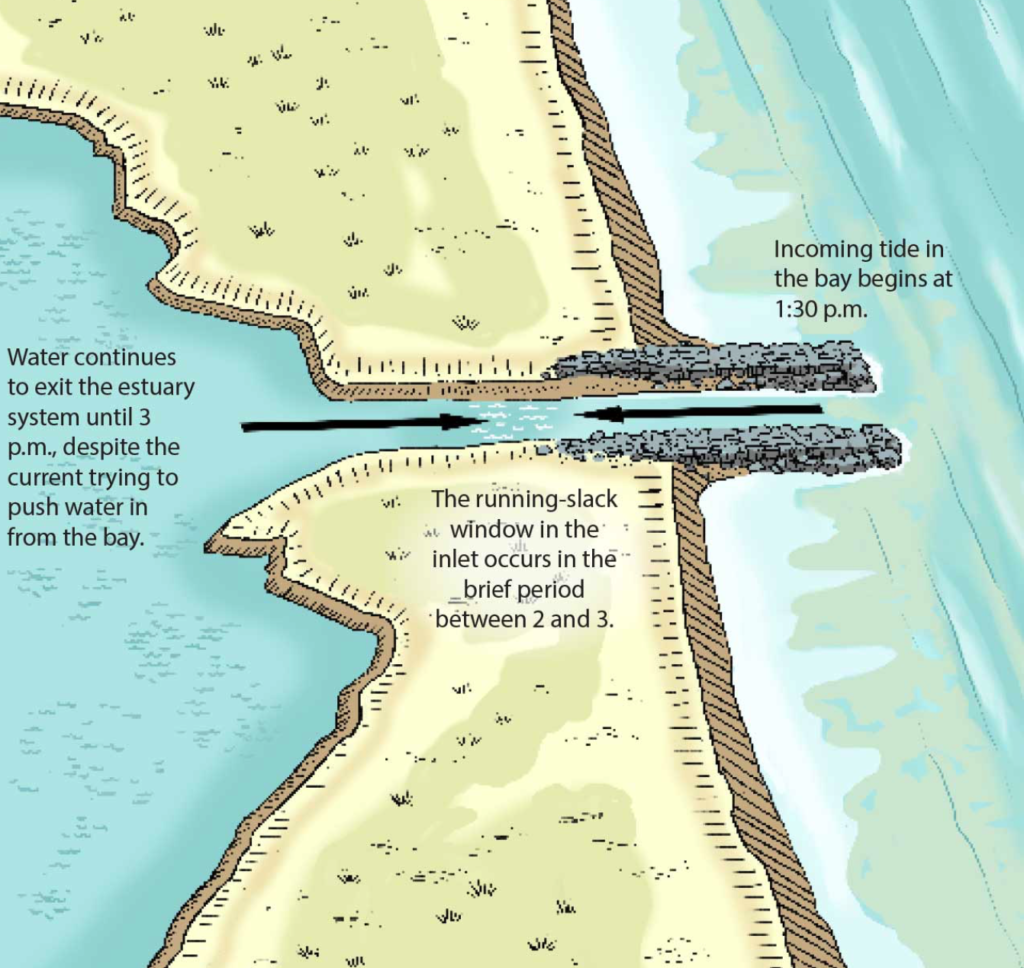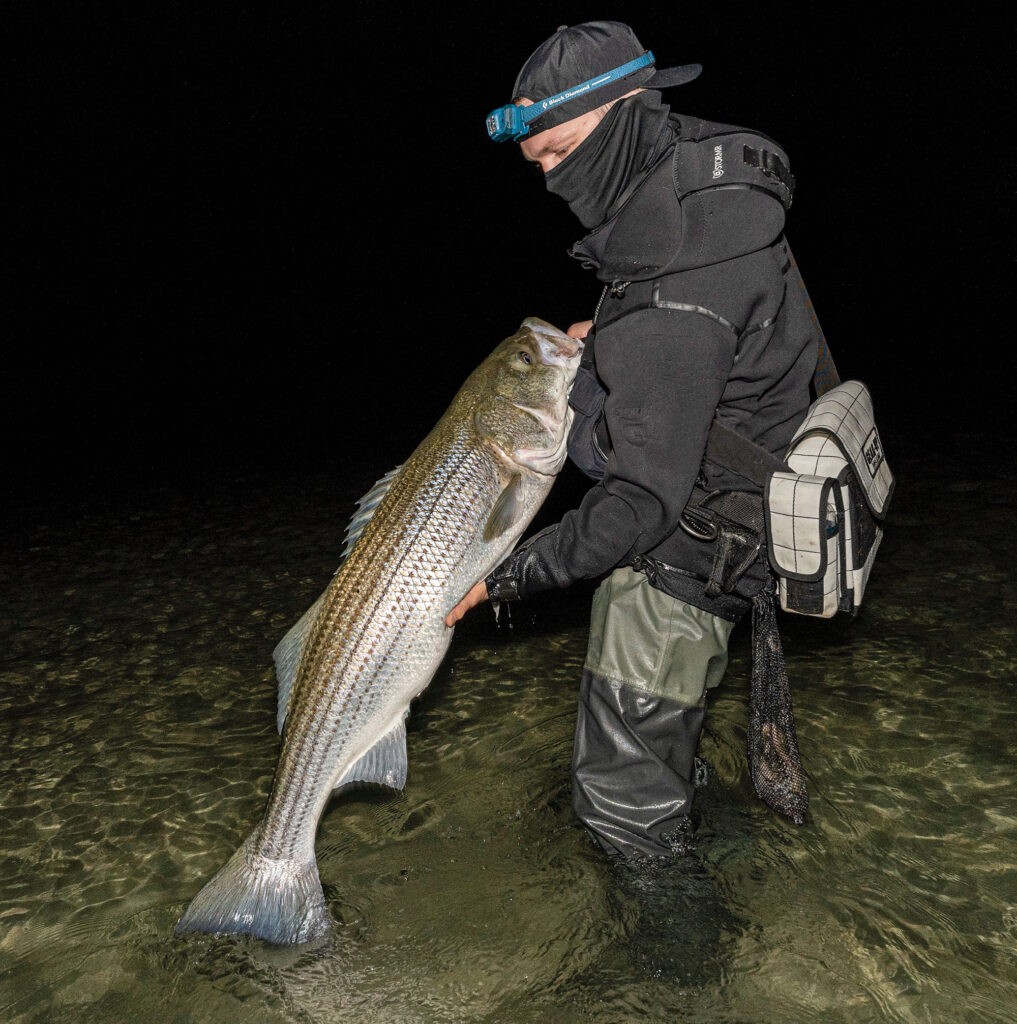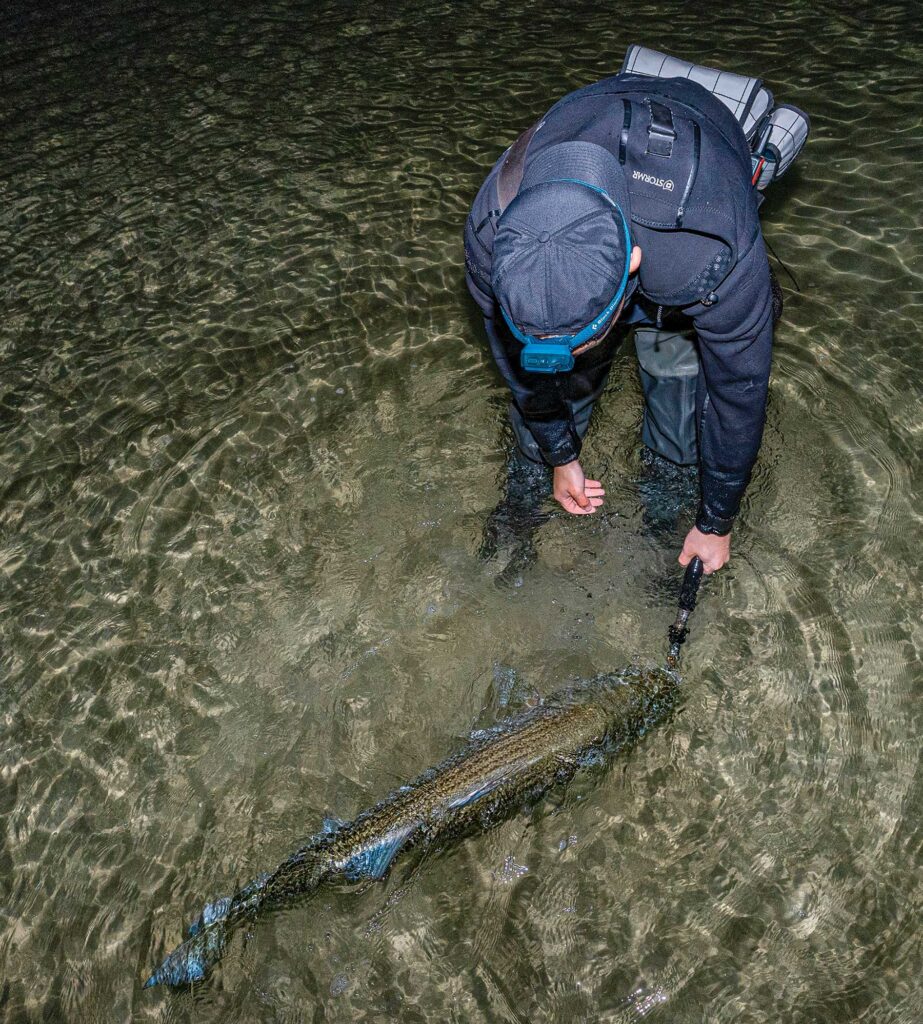Making the most of the tide’s running-slack periods will up your game. Sponsored by LLTackleWorld

Sharp anglers know there are limited periods each day when the largest shares of fish are caught. Finding these productive time slots—commonly referred to as windows—takes dedication. It’s not always easy, but it’s worth the investment because they can be real game-changers, increasing the total number and size of the fish you catch.
One of my most effective windows is what I call “running slack.” Running slack is the short time around the tide switch when tidal water moves in opposition to local current created by depth and structure. To visualize this, picture a spot where the current is moving left to right on a dropping tide. When the tide bottoms out, switches and begins to rise, many anglers assume the current will also switch immediately and move in the opposite direction—right to left in this case. But in most spots, that change in current direction will lag and continue to move in the same direction it did before the tide switch for a short period—in this case, left to right. This interval of tide against current—running slack—is a vulnerable time for bait, which draws in predators. It can be the most productive period of the entire day or night.

Making Moves During the Tide Switch
To understand why the running-slack window is so productive, you must accept that the period around the tide change puts prey at risk. As the tide switch approaches, there is first a drop in current speed and then a change in direction. Bait typically orients to structure about current to secure the best feeding opportunities and shelter, preventing it from being detected and eaten. When the current disappears or switches direction, it forces the bait to move to a new location or pushes it out of hiding. Whether the relocation is small (from one crevice to another) or large (swimming from an offshore rip to a back bay), the movement attracts attention and makes bait easier to attack. Also, bait can’t predict current change like humans; it can only react to it. Often, bait is caught unaware before the move, and predators will take advantage of this.
Predators also move around during the tide switch. Some gamefish abandon one piece of structure in preference for another that offers better feeding opportunities. While they swim from one spot to another, they are susceptible to our casts (where we can intercept their pathways). Others move into or out of backwater areas during the switch or come in tight to shore. Further, many trophy-size fish time their feeding to coincide with the switch, when opportunities for an easy meal are high, moving quickly from one spot to the next looking for prey. They then turn off again for long periods, making them exceedingly hard to catch. If you don’t get them to feed during the switch, you might have to wait a full tide cycle for the next window.
The Running-Slack Feeding Advantage
Tide change is a great time to fish in general, but the smaller running-slack window offers more advantages. Because the tide is moving against the local current during running slack, many colliding currents create chaos. Bait on the move—with the current or transitioning from one spot to the next—is susceptible to being pulled into these intersections, becoming trapped, and being ambushed. And it’s not just weak or injured prey; the strongest and wariest bait can get trapped because it can’t move forward against the current in one direction, nor can it turn and flee against the opposite direction. Plus, even if it can escape, it’s often forced into eddies or along seams, which makes it extremely susceptible to predators.
But colliding currents can happen in a limited area, and they aren’t my favorite reason to target the running-slack window. Away from the intersection, the speed of the current is much slower than during the rest of the tide (when ocean tide and local current move together) while simultaneously not totally stagnant. This means the current is still drawing food toward predators lying in wait, but they don’t have to work hard to hold their position. In essence, during running slack, gamefish have Goldilocks conditions: enough current to give them an advantage, but not so much that they have to expend a lot of calories using it. This can be true anywhere, but I find it most common where there are strong local currents: inlets, around bridges, tidal rivers, estuaries channels, etc.

Finding Your Running-Slack Window
To find a running-slack window, you must remember that changes in inshore current typically do not correspond perfectly with tide changes. Let’s use a hypothetical example to clarify. The tide chart for a buoy outside a small inlet says incoming tide begins at 1:30 p.m. While you might assume incoming current inside the inlet also begins at 1:30 because the incoming tide will push water into the inlet, that’s probably not the case. Instead, you might need to wait until 3 p.m. before the current exiting the backwater completely turns around, overpowered by the incoming tide.
But that isn’t the end of it. You also need to factor in how long the slack tide is, the period around the switch with no tidal movement. Remember, running slack occurs when tidal current and local current are in opposition, not while there is no tidal movement at all. In some spots, slack tide can last for 30 seconds, while it might last for more than 30 minutes in others. Using our same example, although the chart states the tide change is 1:30, the tidal current might not get moving until 2. The period between 1:30 and 2 is slack tide. Now, assume again you’ve observed that the local current in the inlet flips from outgoing to incoming at 3. In this case, the running-slack window would occur between 2 and 3—at the end of the slack tide, but before the current inside the inlet flips. As you can probably tell, nailing down the specific running-slack window requires a bit of scouting, observation and documentation, but it’ll be worth it in the end.
Up and Out
Because there are four tide changes every day, there are also four running-slack windows. Any or all of them can be highly productive. But if I was forced to choose just one, it would be the running-slack window that occurs when the tide is rising, but the current is still moving from the backwater toward the ocean. Picture an inlet, mangrove channel, cut in a sandbar, or any other piece of structure where the current is still going out despite the tide having started to move in. Again, this can apply anywhere, but I find it to be particularly reliable when targeting water moving through an inlet, a river or estuary channels. I believe this is for three reasons.
First, an outgoing current is often most productive overall when targeting inlets or outflows, even during peak current flows and outside running slack. Second, the backwater during this period is as close to empty as possible, meaning bait concentrates in the channels and toward the outlet. Finally, the incoming tide gives predators more confidence to move into the shallows because they know the water is at their backs. This results in prey accumulating in a compact area where predators have a water-movement advantage, and they are less fussy and more aggressive—an angler’s dream.
This window (which I nicknamed “up and out”) only occurs twice in 24 hours.
The limited duration—perhaps lasting only minutes—further drives its productivity. Large experienced fish wait to feed until they have the highest likelihood of success. Because they know this opportunity is limited, they become highly aggressive and more willing to take artificials and flies they might otherwise ignore. In other words, they put on the feed bag and go on the chew.

Running-Slack Presentation
There are many ways to handle running slack, and it’s important to feel out the conditions each trip. However, I generally utilize slow, subtle, and quiet presentations. This is natural because gamefish are generally on the lookout for prey that is disoriented, injured or trying to sneak from one spot to the other; it’s all moving relatively quietly and slowly.
I am adamant that the most natural retrieve during running slack is with the current, not against it. While every species reacts differently to movement, vibration, and visual cues, I encourage you to try a “dead drift” presentation. Essentially, I cast my lure up-current and simply stay in contact with it, keeping the slack out of the line. I add in a twitch every once in a while; otherwise, I let the lure slide by naturally.
Not all lures are capable of being used this way. Typically, you need a slow- or moderate-sinking lure without a lip. Soft plastics in particular are my favorite when rigged light, such as with a swimbait hook or a lightweight jig head. Even if you don’t dead-drift and instead retrieve across current, I find soft plastics the most productive class of lure overall during running slack. My preference is Lunker City Slug-Gos, but there are hundreds of options in every size and shape imaginable. It’s up to you to find which works best with your favorite species, spot, and running-slack window. Thanks for reading




